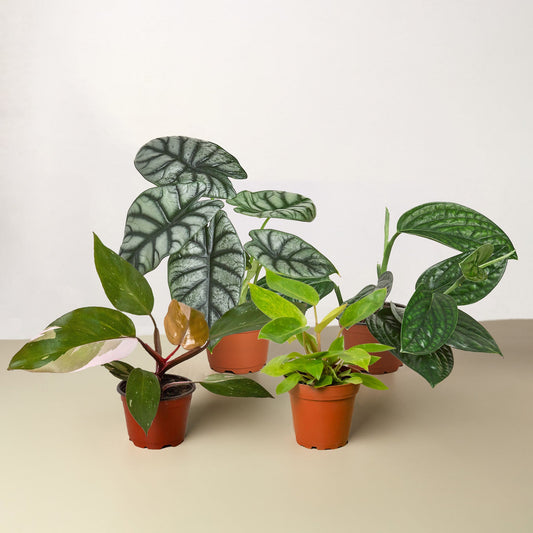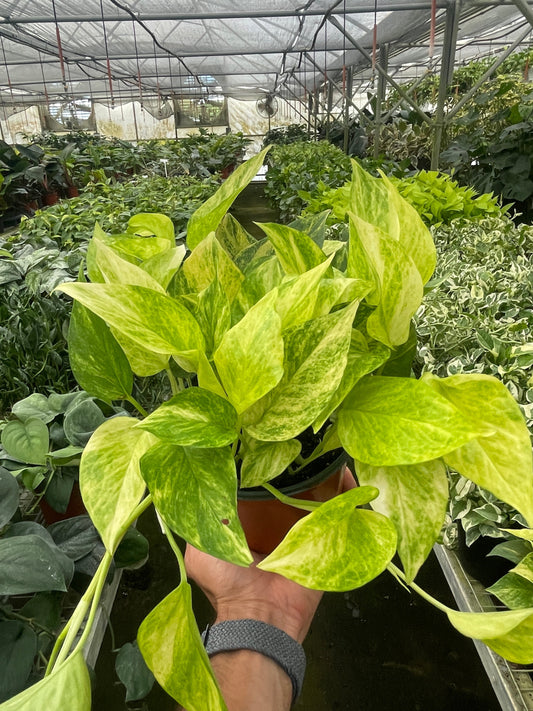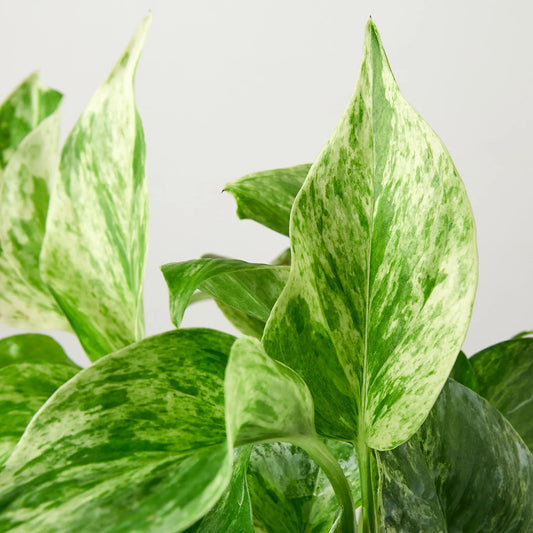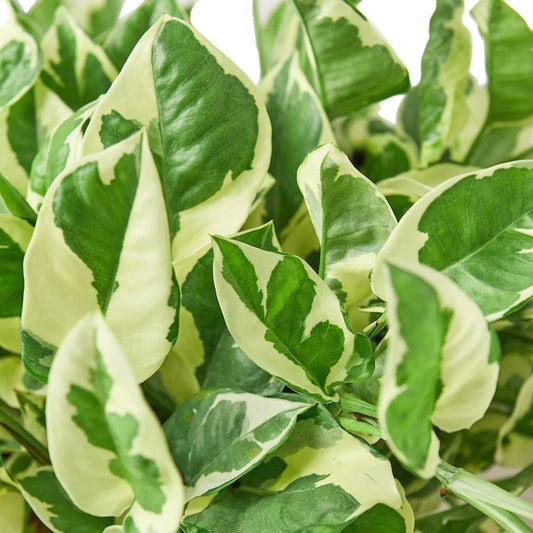Prickly Pear Cactus Aerial Roots: Everything You Need to Know
Cafe Planta Team
So, you've got a prickly pear cactus, and you've noticed something a bit odd: those curious aerial roots sprouting from its pads. Perhaps you're wondering what exactly these roots are doing up there, seemingly defying gravity. Well, you’re not alone! Prickly pear cacti are fascinating plants with some unique characteristics that can leave plant lovers scratching their heads.
In this article, we’ll explore everything you need to know about prickly pear cactus aerial roots, from what they are and why they form to how they affect your cactus's health. By the end, you'll be well-equipped with the knowledge to nurture your prickly friend and embrace its quirky nature.
What Are Aerial Roots?
Aerial roots are pretty much what they sound like—roots that grow above ground. In the case of the prickly pear cactus, these roots sprout from the pads and can look a bit strange if you're not familiar with them. They’re not trying to be rebellious or anything; they’re just doing what nature intended.
These roots are a natural adaptation for survival. In the wild, cacti often face harsh conditions, and any chance to grab extra moisture or nutrients is a win. Aerial roots can help the cactus anchor itself to rocks, trees, or other surfaces, and they can absorb water and nutrients directly from the air. Think of them as the cactus's way of hedging its bets in an unpredictable desert environment.
If your prickly pear cactus starts developing aerial roots, there’s no need to panic. It's just part of how this plant thrives. But, it might also be a signal to check in on its growing conditions, which we’ll get into next.
Why Do Prickly Pear Cacti Develop Aerial Roots?
While aerial roots are a natural feature for many cacti, several reasons might trigger their growth in your prickly pear cactus. Understanding these reasons can help you ensure your plant is happy and healthy.
Response to Environment
One of the primary reasons for aerial root development is the cactus's response to its environment. In nature, prickly pears are used to dry, arid climates. If they sense a lack of moisture or nutrients, they might sprout aerial roots as a way to reach out for more resources.
If your indoor cactus is growing aerial roots, it might be telling you that it needs a bit more humidity or nutrients. Try misting the air around your cactus or ensuring it has access to a well-balanced fertilizer.
Signs of Stress
Interestingly enough, aerial roots can also be a sign of stress. If your cactus is experiencing issues such as root rot or compacted soil, it might start growing aerial roots as a backup plan. It’s like the plant's version of a safety net.
Check your cactus’s potting situation. Make sure it has good drainage, and that the soil isn’t too dense or waterlogged. Sometimes, just a little bit of extra attention in this area can make a big difference.
Impact on Plant Health
Now, you might be wondering if these aerial roots are going to harm your prickly pear cactus. Generally, they’re not harmful, but they’re a sign worth paying attention to.
Aerial roots themselves won't damage the plant. However, they can indicate that your cactus is trying to adapt to less-than-ideal conditions. So, while the roots aren’t a direct threat, the underlying cause might be.
Consider them a helpful hint. They’re like the plant’s way of waving a little flag that says, “Hey, something might be off here!” By addressing the root (pun intended) of the issue, you can help your cactus stay healthy and happy.
How to Care for a Prickly Pear with Aerial Roots
Caring for a prickly pear cactus with aerial roots doesn’t require any drastic measures, but a few thoughtful adjustments can ensure your plant thrives. Let's go over some practical tips.
Check Humidity Levels
Prickly pear cacti are desert plants, but they do appreciate occasional humidity. If your home is particularly dry, consider using a humidifier or misting around the plant. This can help reduce the need for aerial roots to seek additional moisture.
Evaluate Soil and Watering Practices
Make sure your cactus is in well-draining soil. Overwatering is a common problem, so let the soil dry out between waterings. If the soil is compacted or retains too much water, it may be time for repotting.
When watering, do so thoroughly but infrequently. Think of it like a good, long drink rather than constant sips. This mimics the cactus’s natural environment and helps prevent root rot.
Repotting Your Prickly Pear Cactus
If you’ve determined that your cactus's soil is the issue, repotting might be in order. But don’t worry—repotting a cactus is easier than you might think!
Choosing the Right Pot
First, select a pot that's slightly larger than the current one. It should have drainage holes to prevent water from pooling. Terracotta pots are a great choice as they allow the soil to dry out between waterings.
Preparing the Soil
Use a cactus-specific potting mix or make your own by combining regular potting soil with sand and perlite. This mix ensures good drainage and prevents water retention, which is crucial for cacti.
Transplanting the Cactus
Carefully remove the cactus from its current pot. You might want to use gloves or tongs to avoid those prickly spines. Shake off the old soil and inspect the roots for any signs of rot or damage.
Place the cactus in its new home, fill around it with fresh soil, and give it a light watering. Your prickly pear should be much happier in its new digs!
Design Considerations for Indoor Cactus Display
Now, let's talk about the fun part: showcasing your prickly pear cactus in your home. Cacti can be a stunning addition to your interior design, providing a touch of the desert's rugged beauty.
Finding the Perfect Spot
Prickly pear cacti love bright light, so find a sunny windowsill or a spot with plenty of natural light. They can tolerate some direct sunlight, but try to avoid prolonged exposure, especially in the hottest part of the day, to prevent sunburn.
Pairing with Other Plants
Cacti look great when paired with other succulents or low-water plants. Consider creating a desert-themed arrangement with different textures and heights to add visual interest.
- Tall cacti: Like saguaro or totem pole cactus for height.
- Trailing succulents: Such as string of pearls for a draped effect.
- Rosette succulents: Echeveria or sempervivum for a lush base.
This mix can create a striking display that’s both low-maintenance and eye-catching.
Common Myths About Aerial Roots
There are a few myths floating around about aerial roots, so let's set the record straight.
Myth: Aerial Roots Mean Your Cactus is Dying
Not true! While aerial roots can indicate stress or environmental needs, they don’t necessarily mean your cactus is on its last leg. They’re just a sign to pay attention to your plant's conditions.
Myth: You Should Cut Off Aerial Roots
It's best to leave aerial roots alone. Cutting them off won’t solve any underlying issues, and they’re not harming the plant. Focus instead on optimizing the cactus's environment.
Myth: You Need to Mist Aerial Roots Daily
While some humidity can be beneficial, there’s no need to mist daily. Occasional misting or a humidifier can suffice, especially if your home is quite dry.
Prickly Pear Cactus: A Brief Overview
Before we wrap up, let’s take a quick look at the prickly pear cactus itself. These iconic plants are native to the Americas and are known for their flat, paddle-like pads and vibrant blooms.
Prickly pear cacti are incredibly resilient and can thrive in a range of environments. They’re popular not only for their striking appearance but also for their edible fruits, known as tunas, and pads, called nopales.
These plants are versatile, making them a favorite among plant lovers who appreciate both beauty and functionality. With the right care, they can be a standout feature in any home.
Preventing Future Aerial Root Growth
If you want to minimize the growth of aerial roots, consider a few preventative measures.
Regularly Check Environmental Conditions
Keep an eye on humidity levels, soil quality, and light exposure. Regular checks can help you catch any potential issues before they result in aerial roots.
Maintain a Consistent Care Routine
Consistency is key. Stick to a regular watering schedule and be mindful of feeding your cactus with the right nutrients. This helps keep your plant in optimal health.
Observe and Adjust
Sometimes, despite your best efforts, aerial roots may still appear. If they do, observe the plant’s overall health and adjust care practices as needed. Remember, a few roots here and there are not a cause for alarm.
Final Thoughts
Prickly pear cactus aerial roots are a fascinating aspect of these resilient plants. While they might seem unusual at first, they’re a natural and often beneficial feature. By understanding and addressing the conditions that lead to their growth, you can ensure your prickly pear thrives.
At Cafe Planta, we're here to support you on your plant journey. Whether you're looking for a new addition to your collection or need advice on caring for your plants, feel free to reach out to us via email or Instagram. We believe in the power of plants to bring joy and connection, and we're excited to help you cultivate a thriving, beautiful indoor garden.



















